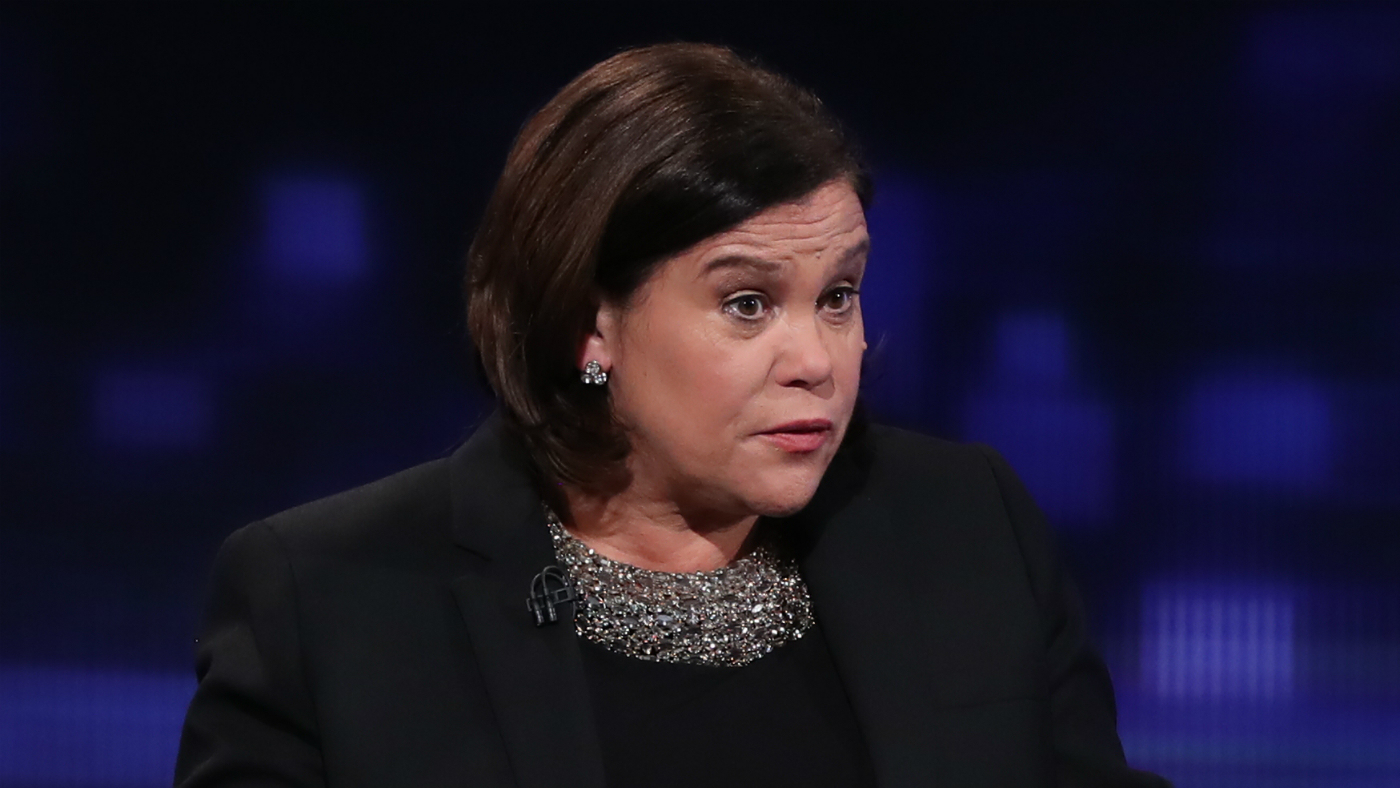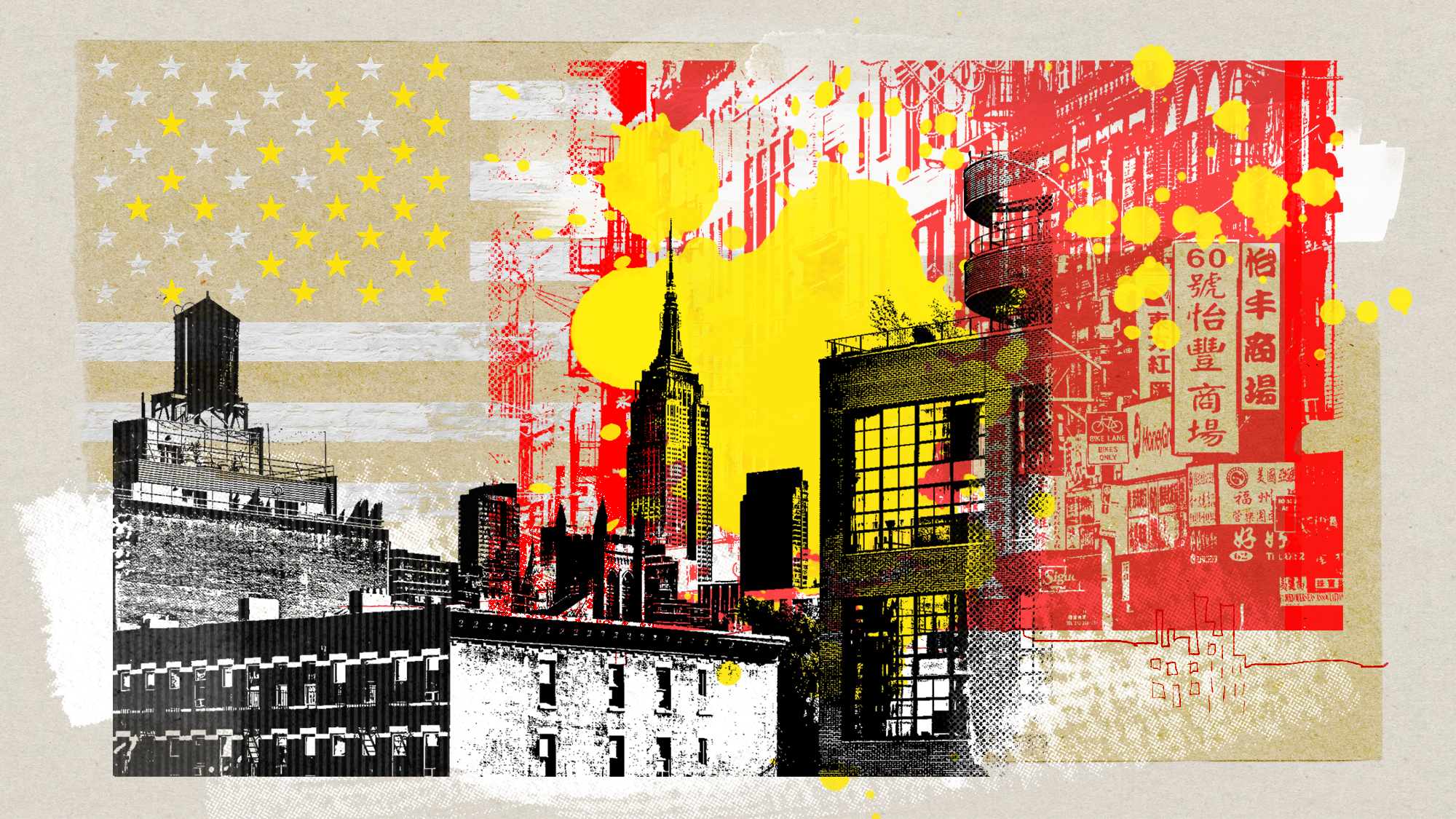How Sinn Fein’s history could impact the Irish election
Republican party’s troubled past threatens to derail the political process in Dublin

Sinn Fein has spent the final week of the Irish general election campaign dogged by calls for its leader Mary Lou McDonald to apologise to the family of a man allegedly murdered by the IRA.
Paul Quinn, 21, was beaten to death in a barn near Oram, County Monaghan, in 2007. His family have always maintained that the republican terrorist group was behind the murder, the BBC reports.
However, speaking to the BBC shortly after the killing, Sinn Fein’s Conor Murphy claimed that Quinn was linked to “smuggling and criminality”.
The Week
Escape your echo chamber. Get the facts behind the news, plus analysis from multiple perspectives.

Sign up for The Week's Free Newsletters
From our morning news briefing to a weekly Good News Newsletter, get the best of The Week delivered directly to your inbox.
From our morning news briefing to a weekly Good News Newsletter, get the best of The Week delivered directly to your inbox.
The murder has become a major issue in the run-up to tomorrow’s Irish general election, prompting Murphy to apologise for his previous comments about Quinn.
But with Sinn Fein’s associations with the IRA back under the spotlight, how could it impact on the vote?
What are the IRA's links to Sinn Fein?
Sinn Fein was founded in 1905 and has historically been regarded as the political wing of the IRA. Its name means “We Ourselves” or “Ourselves Alone” in Irish, and the party has vocally supported the IRA in the past.
A free daily email with the biggest news stories of the day – and the best features from TheWeek.com
Throughout the 1960s, Sinn Fein members were split over supporting the IRA’s use of violence.
“Whereas the ‘Official’ wing of the party, which was later renamed the Workers’ Party, emphasised political and parliamentary tactics,” Encyclopaedia Britannica says, “the ‘Provisional’ wing, or Provos, believed that violence – particularly terrorism – was necessary and justified.”
This split was mirrored in the IRA, which also divided into official and provisional factions.
As a result of its ties to the IRA, Sinn Fein was banned in the United Kingdom until 1974. It has been widely reported that senior members of the party, including its former president, Gerry Adams, have in the past sat on the IRA Army Council. Sinn Fein and Adams deny these allegations.
Since the 1990s both the IRA and Sinn Fein have insisted that they are no longer linked. But this has been rejected by some observers, and just this week a Sinn Fein canvassing van was spotted in the Cavan/Monaghan constituency playing a pro-IRA song.
“There is no escaping the fact that Sinn Fein’s links to the IRA… has frequently made government in the North difficult, and sometimes impossible,” The Irish Times reports.
The paper adds that a string of former IRA members, including one who called himself Adams’s most trusted adviser, have “appear[ed] to wield considerable influence” in Sinn Fein.
How could the Quinn row impact the election?
On Monday, Sinn Fein was polling at 25%, ahead of favourites Fianna Fail on 23% and Leo Varadkar’s governing Fine Gael party on 20%, according to an Ipsos MRBI poll.
As the party is fielding only 42 candidates (compared with Fianna Fail’s 84, Sinn Fein will at best secure a quarter of the seats in parliament. But, The Guardian reports, the breakthrough could “realign Irish politics after a century of domination” by two centrist parties, Fianna Fail and Fine Gael.
With her party rocketing in the polls, Sinn Fein leader Mary Lou McDonald is being touted as a potential kingmaker if neither Fianna Fail or Fine Gael get enough seats to form a government. But Fianna Fail has ruled out “a grand coalition” with Fine Gael, while both Fine Gael and Fianna Fail have ruled out a coalition government with Sinn Fein. This could potentially cause political gridlock in Dublin.
As the BBC reports, the two main parties are concerned about “shadowy figures” behind the scenes at Sinn Fein, “often [including] former IRA prisoners”.
The reigniting of the row over Paul Quinn’s death – just days before Ireland heads to the polls – has placed attention back on those links, further reducing the likelihood of post-election talks.
-
 Heavenly spectacle in the wilds of Canada
Heavenly spectacle in the wilds of CanadaThe Week Recommends ‘Mind-bending’ outpost for spotting animals – and the northern lights
-
 Facial recognition: a revolution in policing
Facial recognition: a revolution in policingTalking Point All 43 police forces in England and Wales are set to be granted access, with those against calling for increasing safeguards on the technology
-
 Codeword: December 14, 2025
Codeword: December 14, 2025The daily codeword puzzle from The Week
-
 Femicide: Italy’s newest crime
Femicide: Italy’s newest crimeThe Explainer Landmark law to criminalise murder of a woman as an ‘act of hatred’ or ‘subjugation’ but critics say Italy is still deeply patriarchal
-
 Brazil’s Bolsonaro behind bars after appeals run out
Brazil’s Bolsonaro behind bars after appeals run outSpeed Read He will serve 27 years in prison
-
 Americans traveling abroad face renewed criticism in the Trump era
Americans traveling abroad face renewed criticism in the Trump eraThe Explainer Some of Trump’s behavior has Americans being questioned
-
 Nigeria confused by Trump invasion threat
Nigeria confused by Trump invasion threatSpeed Read Trump has claimed the country is persecuting Christians
-
 Sanae Takaichi: Japan’s Iron Lady set to be the country’s first woman prime minister
Sanae Takaichi: Japan’s Iron Lady set to be the country’s first woman prime ministerIn the Spotlight Takaichi is a member of Japan’s conservative, nationalist Liberal Democratic Party
-
 Russia is ‘helping China’ prepare for an invasion of Taiwan
Russia is ‘helping China’ prepare for an invasion of TaiwanIn the Spotlight Russia is reportedly allowing China access to military training
-
 Interpol arrests hundreds in Africa-wide sextortion crackdown
Interpol arrests hundreds in Africa-wide sextortion crackdownIN THE SPOTLIGHT A series of stings disrupts major cybercrime operations as law enforcement estimates millions in losses from schemes designed to prey on lonely users
-
 China is silently expanding its influence in American cities
China is silently expanding its influence in American citiesUnder the Radar New York City and San Francisco, among others, have reportedly been targeted